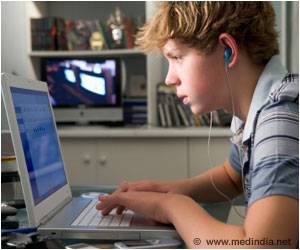Machine-learning algorithm helps to identify depression in people by analyzing their photos posted on Instagram.

That raises the fascinating possibility that it might be possible to diagnose depression en masse by analyzing the photos people post to social-media sites such as Instagram.
Instagram offers a variety of filters to change how a photo appears, and the researchers discovered that healthy participants were more likely to use a filter than depressed people. But if a depressed person did use a filter, the most common choice was Inkwell, which is one of the filters that turns a photo black and white.
Andrew Reece at Harvard University in Cambridge, Massachusetts, and Chris Danforth at the University of Vermont in Burlington, who have found significant correlations between the colors in photos posted to Instagram and an individual’s mental health. The link is so strong that the pair suggest that it could be used for early detection of mental illness.
The researchers began by sourcing some 500 workers from Amazon’s Mechanical Turk service who also had Instagram accounts. They asked these Turkers to complete a series of questionnaires, including a standard clinical depression survey. They then invited the Turkers to share their Instagram posts for the study.
Some 170 Turkers agreed, of whom around 70 were clinically depressed. The survey asked various additional questions about their condition, such as the original date of their diagnosis.
Advertisement
These raters were asked to judge how interesting, likeable, happy, and sad each photo seemed on a scale of 0 to 5.
Advertisement
They also counted the number of faces in each image using face detection software, on the assumption that faces are a proxy for an individual’s level of social activity. And they assessed the Instagram community’s reaction to each image by counting the number of likes and comments.
Armed with this data, the researchers used a machine-learning algorithm to spot correlations between depression and image properties.
The researchers found that depressed individuals tend to post images that are bluer, grayer, and darker, and receive fewer likes, than those posted by heathy individuals.
Instagram offers a wide range of filters that give images a certain character and atmosphere. Depressed individuals had a clear favorite among these. “When depressed participants did employ filters, they most disproportionately favored the ‘Inkwell’ filter, which converts color photographs to black- and- white images,” say Reece and Danforth. By contrast, healthy individuals preferred a filter called Valencia, which lightens photographs.
The data analysis threw up some curious observations, too. Photographs that humans rated as happy or sad were only weakly correlated with depression. Depressed individuals were also more likely to post photos with faces, but these photos tended to have fewer faces per photo.
Just why this happens isn’t clear, but Reece and Danforth have an idea. They point out that depressed people tend to use more self-focused language, and that this may extend to images as well. “If so, it may be that the abundance of low- face -count photos posted by depressed users are, in fact, self -portraits,” say the researchers, although they add that this “sad selfie” hypothesis remains untested.
An interesting question is how well the algorithm can identify depressed individuals using the images they post on Instagram. So the researchers set it lose on the images posted by 100 individuals and found that the algorithm correctly identified 70% of those who were depressed. That’s significantly better than GPs manage when asked to identify depressed individuals.
“These findings support the notion that major changes in individual psychology are transmitted in social-media use, and can be identified via computational methods,” say Reece and Danforth. And that will provide hope that mental illness can be accurately detected earlier, allowing for more effective intervention.
Source-Medindia















